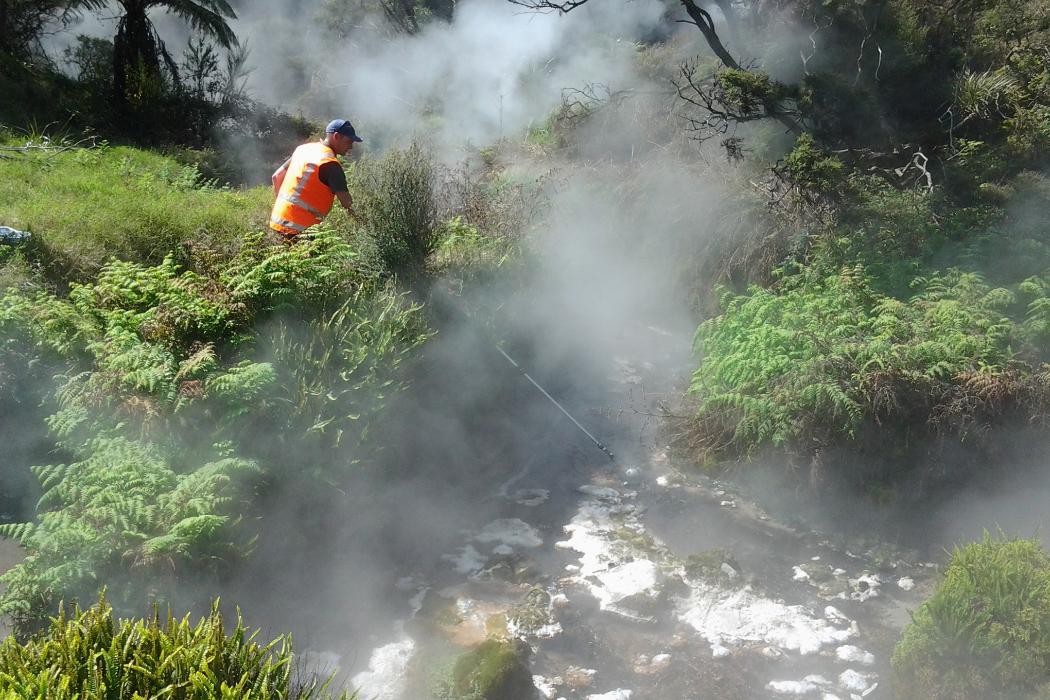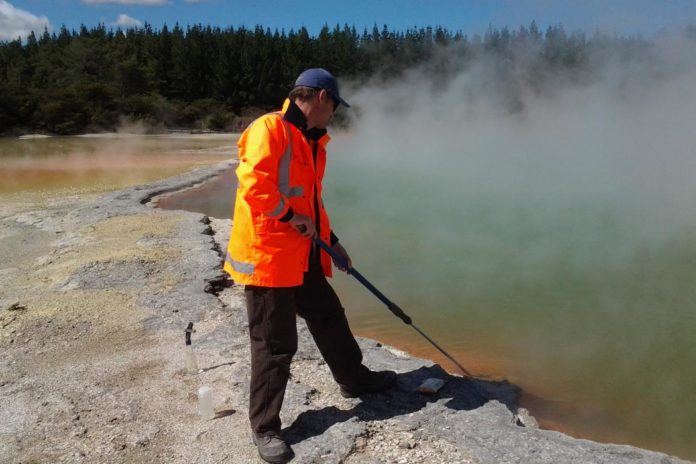By sampling hot pools in the Taupō Volcanic Zone for more than two years, scientists at the University of Canterbury have provided unique insight into geothermal springs’ makeup. They even discovered 28,000 different microorganisms.
The temperature of the pool was about 18°C to 100°C. Scientists observed the biogeography of the bacteria and archaea in the pools, what is driving their distribution, and the importance of the springs’ chemistry and physical conditions. For this, they extracted DNA of each bacteria.
Formerly of GNS Science, Dr Matthew Stott said, “The 1000 Springs Project was originally conceived as a way of taking a microbiological stocktake of one of New Zealand’s iconic environments. However, the outcomes have exceeded our expectations, with the outputs benefiting tourism operations, conservation and kaitiakitanga, mātauranga Māori, public education and scientific research.”

“It is an amazing diversity of geothermal ‘extremophilic’. And that is just at the genus level, with species and strain still to be explored.”
“From a scientific perspective, the geothermal pools are a huge untapped and undescribed resource. There is also a history of economic value in the geothermal world, so it’s true to say we have not known the value of what we have.”
The examination gather started with straightforward inquiries, for example, for what reason would the pool just meters from another so extraordinary, and who is there? The 1000 Springs Project is the biggest and most far-reaching scene-scale geothermal investigation at any point attempted, and its esteem is still to be completely tapped. The subsequent stage might be examination down to the genome level, where the genuine uniqueness of the microorganisms lies.
Professor Craig Cary said, “There are literally geochemical parameters governing the composition structure in the different pools. Nobody ever had a biogeographic sense of that – and we do now. It is just the tip of the iceberg on the dataset in terms of what questions we can answer. My dream is to do all 1000 metagenomes. All the DNA from all of our pools is sitting here, ready to be further explored.”
Dr. Stott said, “It is not just the magnitude of the study that is distinctive, but also the nature of the scientific partnership with local iwi. Much of the Taupō Volcanic Zone (TVZ) is within the rohe of different Māori groups. Kaitiakitanga and mātauranga (indigenous rights and knowledge) were very much at the forefront of the team’s minds and work practices.”
“We could never have done this without the iwi guidance and permission. We were allowed to sample a large number of springs throughout the TVZ, many of which were important in terms of tribal knowledge. It was a great learning experience for both researchers and iwi; the researchers learned about traditional uses and korero of different springs and the researchers were able to provide insight into the microbial world and how the chemistry and microbiology interact in hot spring ecosystems.”
The MBIE-funded $1 million 1000 Springs project has had its first major results published in the high profile journal Nature Communications.
